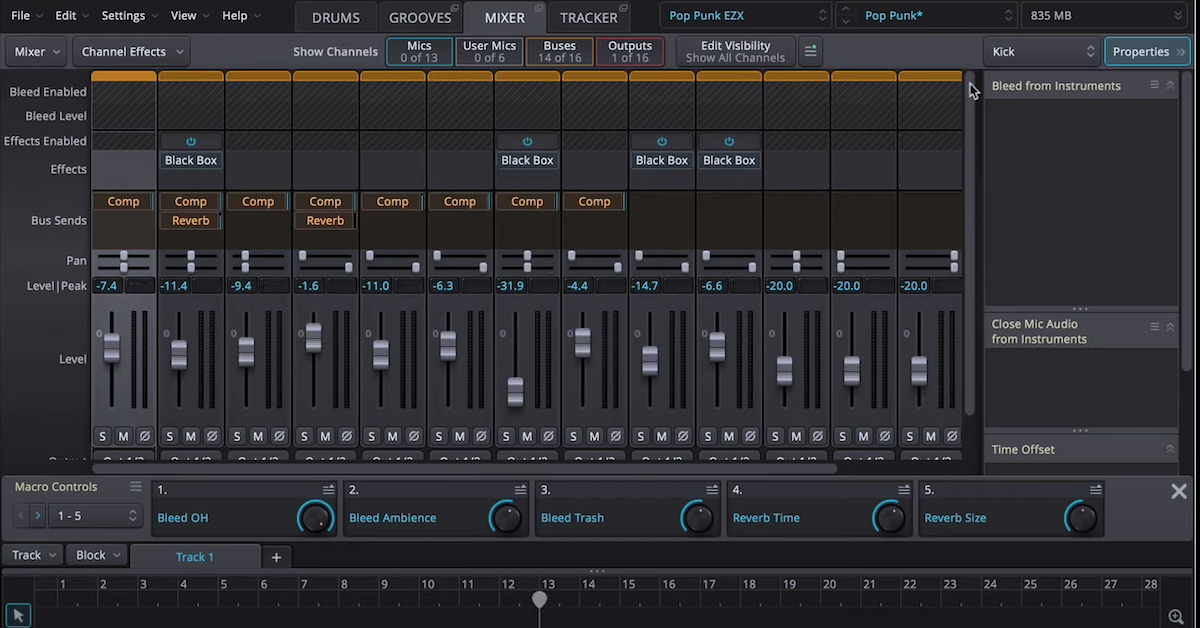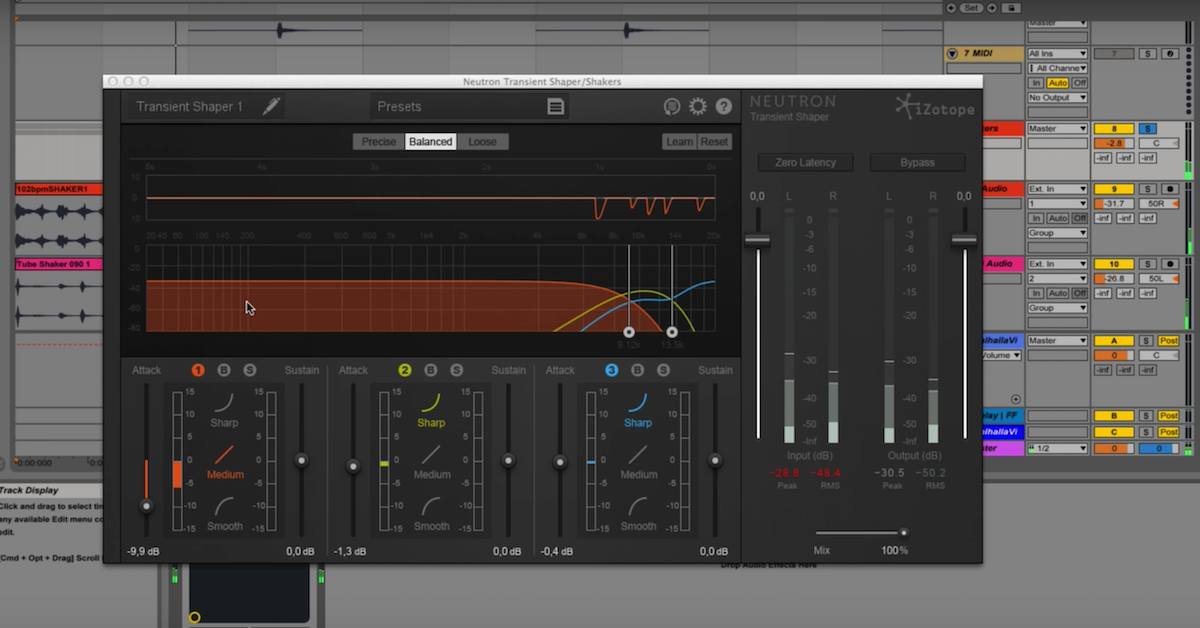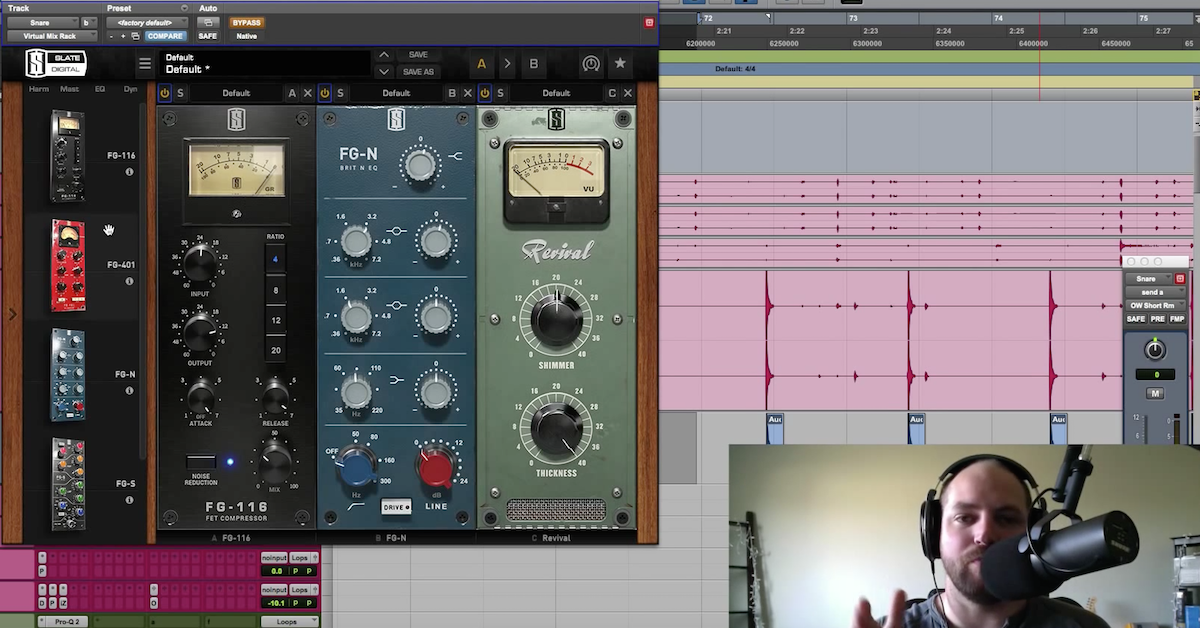Tips for Adding Dynamics to Programmed Hi-Hats
In a lot of those genres, there’s actually someone sitting there, playing the drums out, or they’re using a hi-hat loop, or they’re programming their own hi-hat loop. So I’m going to show you a couple of tricks you can use to add some dynamics to your hi-hats.
So the first thing you’re going to do is pick live sounding hi-hats as if they’re from the same drum kit, and if you don’t have that option, anything that sounds kind of similar. So I’ve got four hats here from my homie —
[hi-hats]
And I’ve got an open hat, I’ve got more of a longer hat, I’ve got a loose hat, I’ve got two short hats.
The next thing is think about how a drummer would play these out. He or she might be more aggressive on the attack and start with more of a sharp hat like that, or more of a loose hat. You’ve got to actually watch some YouTube videos, or actually have seen someone actually using the drums to kind of understand. And even if you’re sitting down at a drum set at Guitar Center or something, and go and mess with the drums. See what it sounds like when the hat’s open, when it’s closed, when you step on the pedal and hit it a certain way. There’s all types of different things you can do with hi-hats.
So my suggestion is to research and check out how these drummers are actually playing their hats, because it’ll help you apply that knowledge to your program.
I’ve got this drum loop here that I programmed. Very basic drum loop, so this is what it sounds like.
[drum loop]
Very basic drum loop. So this is at 100 bpm, so if you’re new to programming hi-hats, or if you’re just getting started at this type of thing, you might want to slow it down. So let’s do this, we can slow this 100 bpm loop down to maybe, like… 70 bpm, right? So now it’ll sound like this.
[drum loop, slowed down]
So what I’ll do is I’ll turn the metronome on, and I’ll also turn the velocity all the way up. You can always adjust the velocity later, but right now, I just want to play out the idea that I had.
[playing drums in]
So I’ve laid out a couple of hi-hats here, and what I’m going to do is I’m going to speed it back up.
[drum loop, sped up]
So I’ve got my hi-hats, right? And what I’ll do is I’ll take these all…
[drums]
There’s a lot of variation going between the open hats and the closed hats. So now I want to make it sound like someone is actually playing behind it by adjusting the dynamics and the velocity. So in that pattern, I’m going to take these hats, and I’m just going to lower the velocity on almost every single one of them, just the same, but also, I’m going to go through and adjust, you know, just to give it a little bit more of a variation.
[drums, adjusted velocity]
Also notice that I haven’t quantized these. I think quantization can really, really mess up your groove, so I’m going to leave these unquantized, and I might even nudge them a little bit more.
[loop]
Now what this does is it creates a little bit more swing in your groove. So I’m just going to loop this throughout, and now, my eight bar loop sounds like this.
[loop]
You’ll get bored of that little two bar loop with the hi-hats, because it doesn’t sound like, you know, when someone is actually playing the drums, they’re just doing a two bar loop, they’re actually playing the drums through. Go back and add more open hats.
What I can do is actually go in and gate some of this open hi-hat.
[drum loop]
What I did was add a little variety to the actual hi-hat loop.
Now you’ve got a hi-hat loop you can use. You’ve nudged it a little bit, and the next thing you can do is put some transient design on it. So I’m going to take those hats, and I’m going to print them to audio. So now that I’ve printed those hi-hats to audio, what I’m going to do is pull up a transient design plugin. So I’m going to use Transient Master and put that on the hi-hats, and what I’ll do is just go through the presets and see if there’s anything that I like.
[drum mix]
So what I did was I ended up closing the hi-hat a little bit more, just to give it a little more of a groove.
Another thing you can actually do is layer the drums, and that’ll also help the entire thing glue together.
So what I’ll do is I’ll add a —
[sample playback]
This clack thing.
And the next thing I’ll do is I’ll add a little bongo loop to it to see if I can glue all of that together.
[bongos]
I’ll use that, that sounds kind of cool. I’ll just chop it right there.
So don’t be afraid to nudge these things around. I’ve got these loops here, and they sound a little bit off, but I don’t really give a shit because it sounds dope.
[loop]
I might even nudge these hats a little bit more, just to do it. So there you have it, guys. Programming some dynamics into your hi-hats and making your drum loops sound a little bit tighter, and adding some percussion. Because fuck it.
So that about wraps it up for me, guys. I hope you guys learned something. Shout out to The Pro Audio Files for having me. If you have any questions, comments, feel free to hit me up in the comments section, or email bausymphony@gmail, or on social media. BAU Symphony on Instagram, Twitter, and if you haven’t had a chance to, check out some of my sample packs. I’ve got Structures, I’ve got I’m Operablem, and I’ve got Prism sound collection all available on samplepacks.co and on sellify.com/symphony.
And that’s about it. See you guys out there. Peace.





